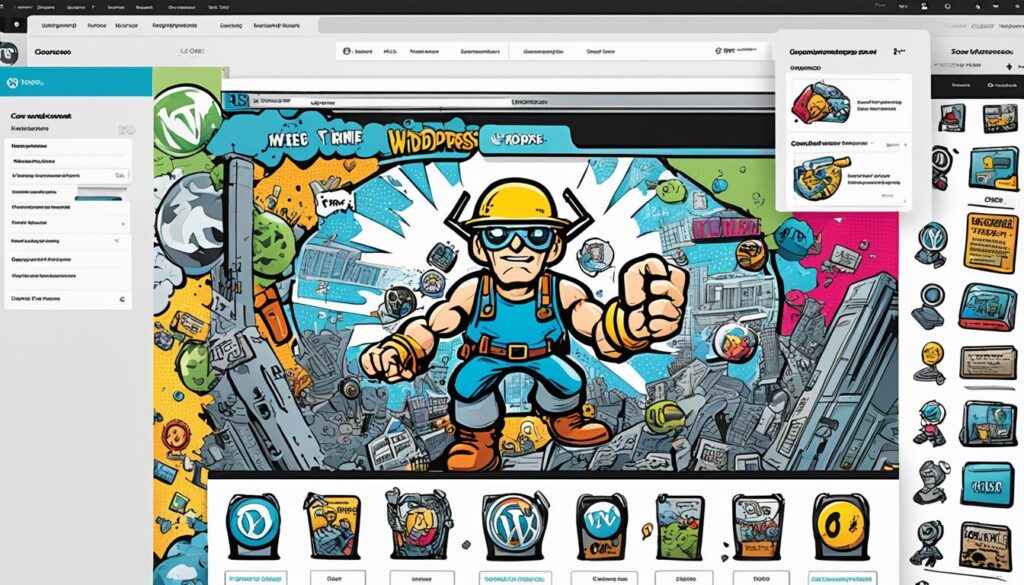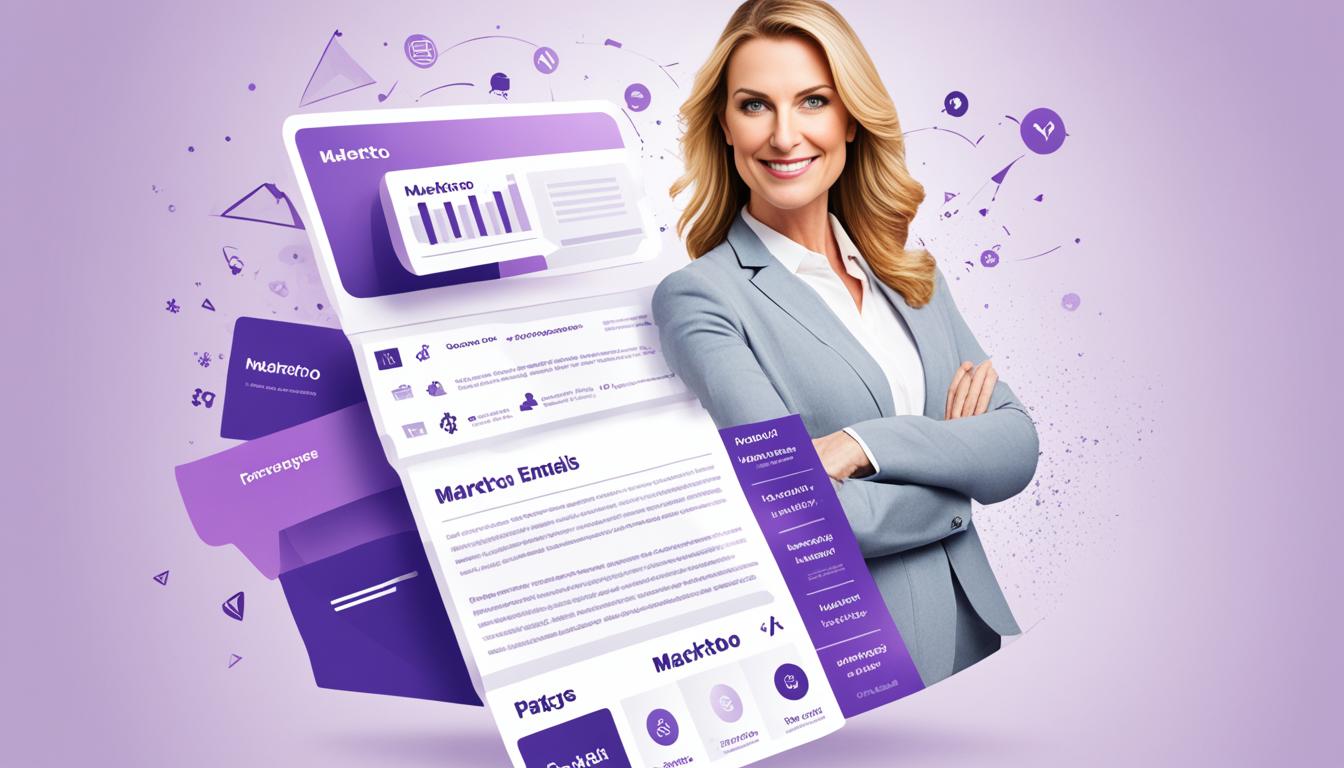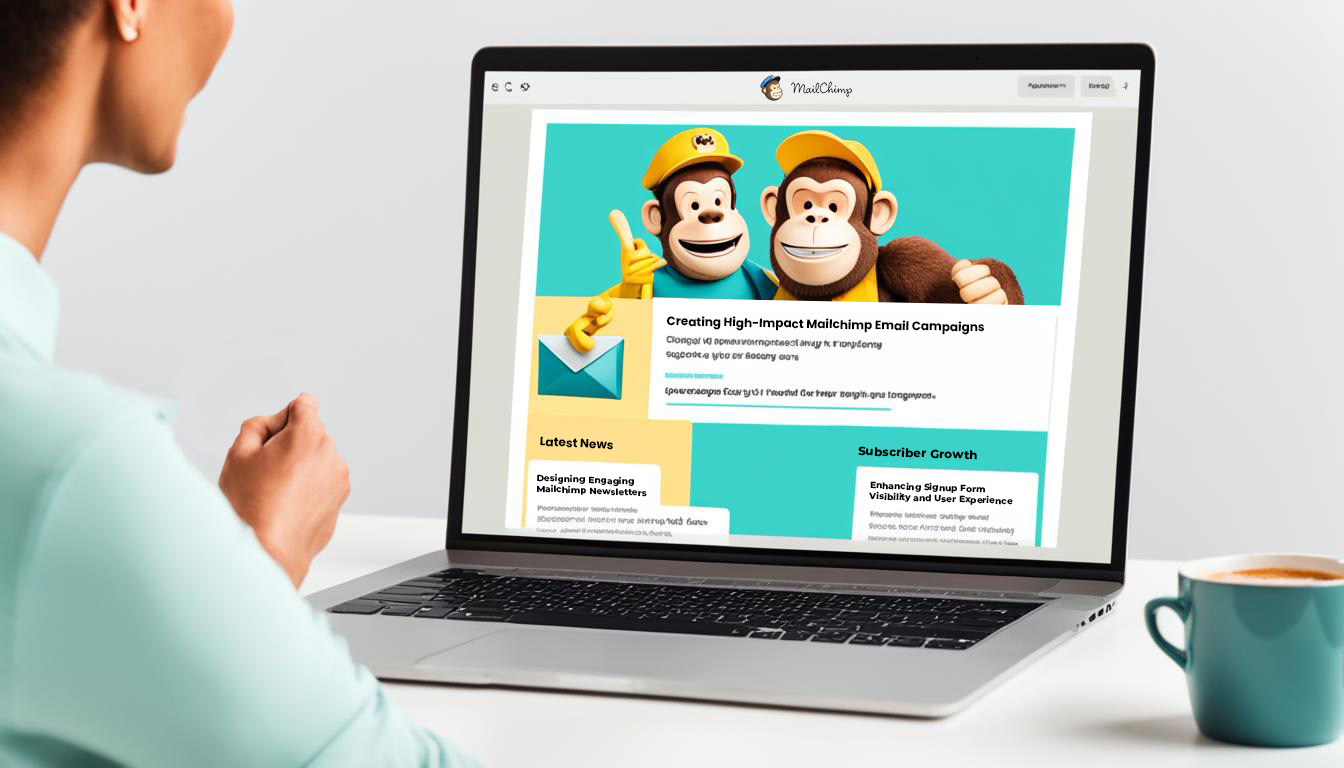In the digital age, creating a website that stands out from the crowd is more important than ever. One of the most effective ways to ensure your online presence shines is through WordPress theme customization. By personalizing your WordPress website design, you can craft a unique visual identity that resonates with your brand and engages your audience. Tailoring a theme to fit your style is not just about aesthetics; it’s about leveraging the flexibility of custom WordPress themes to enhance the user experience and elevate the functionality of your site. Whether you’re a blogger, business owner, or creative professional, unlocking the full potential of your WordPress theme is the key to establishing a compelling and professional website.
Key Takeaways
- WordPress theme customization is crucial for creating a distinctive and professional online presence.
- Adapting a theme to align with your brand identity improves engagement and user experience.
- Personalizing your WordPress site goes beyond aesthetics, encompassing functionality and performance.
- With the right approach to customization, WordPress websites can become powerful tools for personal or business use.
- An optimized and custom-tailored WordPress theme is more likely to perform well in terms of SEO and usability.
Understanding the Basics of WordPress Theme Customization
Delving into the realm of WordPress theme customization presents a world of possibilities for personalizing your website with precision and care. It’s a process that empowers users to tailor the aesthetic and functionality of their WordPress site to align perfectly with their branding and user experience goals. Whether it’s a blog, business website or an e-commerce platform, mastering WordPress theme customization is fundamental for anyone invested in creating a distinctive online presence with the best WordPress themes on the market.
What is WordPress Theme Customization?
WordPress theme customization is the process of modifying a theme’s code, style, and functionality to meet specific design requirements without altering the core WordPress files. It enables website owners to inject their unique style and preferences into their site’s design, offering a way to stand out amongst the myriad of online entities. With WordPress theme development skills, the transformation from a generic template to a personalized design is not only achievable but also straightforward.
The Importance of Child Themes
One of the cornerstones of safe and efficient theme customization is the use of child themes. A child theme inherits the functionality of the parent theme while keeping your modifications intact. This method is essential, especially when theme updates are released. Without a child theme, your customizations could be overridden. Embracing this approach safeguards your changes and maintains the pristine functionality of your WordPress site through updates and changes.
Tools and Plugins You’ll Need
To effectively embark on WordPress theme customization, several tools and plugins are indispensable, each catering to various skill levels:
- WordPress Customizer: Built into WordPress, this tool allows users to tweak site titles, colors, and widgets with a live preview.
- Page Builder Plugins: Offer a drag-and-drop interface for creating custom page layouts. Plugins like Elementor and Beaver Builder are popular choices.
- Custom CSS Plugins: For those with coding knowledge, adding custom CSS is a breeze with plugins like Simple Custom CSS.
- Child Theme Configurator: This plugin simplifies the creation and management of child themes, ensuring customizations remain unaffected by theme updates.
- Developer Tools: For advanced users, tools like Firebug or Chrome DevTools provide in-depth insights into the theme’s structure and styling.
Owning these tools and plugins essentially arms you with the means to sculpt and refine your WordPress website design, ensuring both the form and functionality resonate with your unique vision, propelling your site to the forefront of WordPress theme development.
Identifying the Right WordPress Theme for Your Needs
Embarking on the journey of building a website entails the pivotal decision of choosing an appropriate WordPress theme. It’s a choice that sets the tone for your site’s personality, usability, and the impression it leaves on visitors. Fortunately, with WordPress theme customization services, you can tailor the aesthetics and functionality to match your specific requirements.
Factors to Consider When Choosing a Theme
Selecting the right theme for your WordPress site goes beyond just aesthetics. Several factors should influence your decision:
- Industry Relevance: Ensure that the theme resonates with your business sector and complements your brand’s message.
- Mobile Responsiveness: With mobile traffic accounting for a significant portion of web usage, a responsive theme is non-negotiable.
- Browser Compatibility: Your theme must provide a seamless experience across all major browsers.
- Customization Options: Look for themes that offer comprehensive WordPress theme customization services to enhance flexibility.
Best WordPress Themes for Different Industries
Finding top WordPress themes that align with your industry is crucial for building an effective online presence. Here’s a list of themes renowned for their adaptability and customization options:
- For blogs and online magazines, Astra and Divi offer unparalleled flexibility and design choices.
- Businesses in e-commerce can benefit from the robust, WooCommerce-compatible themes like Flatsome and Shopkeeper.
- Creative agencies and portfolios can find their match in themes like Uncode and Kalium, known for creative layouts and dynamic galleries.
Selecting a theme is the first step in a journey towards an engaging and successful website. Leverage WordPress theme customization services to fine-tune your choice, ensuring it meets your business requirements and caters to your audience’s expectations. By being mindful of these aspects, your WordPress website will be well-positioned for success.
WordPress Theme Customization Best Practices
Let’s delve into best practices for WordPress theme customization that can significantly enhance the appeal and functionality of your website. Engaging professional WordPress themes or custom WordPress themes is only the beginning; the real magic lies in tailoring them to embody your brand’s ethos and serve your audience proficiently.
Commence with a comprehensive site backup. This safety net allows you to experiment with different customization options without worrying about losing your content or functionality. As you modify your theme, incremental backups can be particularly useful when tracking which changes had the most beneficial impact.
“The best WordPress sites are those that are consistently branded, intuitively navigable, and designed for all users to access effortlessly.”
Consistent branding throughout your website is paramount. From your homepage to your contact form, every element should contribute to a narrative that resonates with your audience. Professional WordPress themes offer a plethora of customization options to achieve this cohesion.
Ensuring your site’s navigational ease cannot be overstated. Users should be able to find what they’re looking for within seconds. This is not just about good user experience (UX); it’s about retaining visitors and preventing them from bouncing to a competitor’s site.
Regarding search engine optimization (SEO), your efforts should begin with the theme you select. Custom WordPress themes are often designed with SEO in mind, making it easier for search engines to crawl and index your content.
Regularly test your site’s performance post-customization. The addition of custom features should not detriment the site’s speed or responsiveness. When you optimize for performance, you’re prioritizing user experience, which indirectly benefits your site’s ranking on search engines.
- Backup your site before customizing
- Remain consistent with your branding
- Focus on the ease of navigation
- Optimize for SEO during and after customization
- Test for performance and user accessibility
- Choose themes that meet web standards
- Ensure customizations are accessible to all
Select a theme that not only reflects your brand’s visual identity but also offers customizability. Themes with extensive customization options can adapt as your brand and audience needs evolve. Look for professional themes that provide a balance between aesthetic flexibility and functional prowess.
Accessibility is essential, ensuring your site is usable by everyone, including people with disabilities. Accessible websites aren’t just a legal imperative; they expand your audience and often lead to better overall site usability.
Ultimately, the crux of WordPress theme customization is to present a site that’s as unique as your brand itself. By adhering to these best practices, you’ll craft an online presence that is both captivating and operable—ushering in an era of success for your online endeavors.

Customizing WordPress Themes With Custom CSS
For those versed in the basics of web development, WordPress theme customization takes a more strategic and hands-on approach with the use of Custom CSS. While numerous themes provide a range of options to alter your site’s appearance and functionality, diving into CSS code can unlock truly personalized styles that make your WordPress site stand apart.
WordPress theme development at its core allows for modifications that reflect the brand’s identity through visual elements. Custom CSS is a powerful method to inject your distinctive design preferences into your WordPress site. Below, find actionable steps to tweak your theme efficiently using Custom CSS:
- Accessing the Theme Customizer: Navigate to your WordPress dashboard and click on ‘Appearance’ > ‘Customize’. Here you’ll find the ‘Additional CSS’ section where you can directly input your custom code.
- Understanding CSS Syntax: Familiarize yourself with the basics of CSS, including selectors, properties, and values to accurately target and style elements within your theme.
- Implementing Custom Styles: Start with small changes such as altering text color or font sizes. For example, to change the body text color, you would use
body { color: #333333; }. - Making Advanced Layout Adjustments: As you grow more comfortable, delve into more complex alterations involving the layout and positioning of elements.
- Saving and Previewing Changes: Always utilize the live preview function to see your adjustments in real time and save your changes once satisfied.
Here are a few examples of common CSS customizations that can enhance the aesthetic appeal and user experience of your WordPress site:
- Changing font styles and weights for headings and body text to match your brand identity.
- Adjusting the color scheme of your site by updating the CSS for text, background, and link colors.
- Improve the mobile responsiveness by using media queries to ensure your site looks great on any device.
Custom CSS is a potent tool in the realm of WordPress theme development, capable of expressing a unique brand personality beyond the basic tweaks. Whether you’re making slight visual upgrades or undertaking a complete overhaul, Custom CSS provides the precision and flexibility for WordPress theme customization to meet sophisticated design ambitions.
Personalizing the Header and Footer of Your WordPress Site
When establishing your brand’s online presence, the most enduring impressions are often made through your website’s header and footer. Take control of these key areas to reflect the essence of your brand by leveraging premium WordPress themes and custom WordPress themes. These themes provide a plethora of options for personalization that goes beyond mere aesthetics, contributing to both functionality and navigation.
Editing Header Images and Logos
Your WordPress site’s header is the launching point of your brand’s digital identity. A well-chosen header image or logo sets the tone for your website’s entire user experience. To modify these critical components, navigate to your theme’s Customizer, where you can upload new images or adjust sizes. For themes that support it, taking advantage of high-resolution imagery is crucial for a professional appearance. Remember, the logo isn’t just a placeholder; it’s a crucial aspect of your site’s identity, one that resonates with visitors across every page.
Adjusting the Footer Layout and Information
- Layout Customization: The footer can carry much more than legal notices or copyright. By using widgets and theme settings, you can transform this space into a hub of navigation, featuring links to your most valuable content, an email sign-up form, or credentials of your business.
- Information Update: Keeping the footer information updated through customizable options ensures your visitors have access to the latest about your brand. This reflects reliability and attention to detail.
- Legal and Social Links: Inserting and maintaining current legal links or social media icons in your footer is often facilitated by widgets that come with your selected custom WordPress theme.
Understanding and making full use of the header and footer can dramatically change how users interact with your site. Remember, your website is a direct reflection of your brand and ensuring that every aspect, from the header image to the footer’s content, aligns with your branding strategy is integral. Selecting a premium WordPress theme with versatile header and footer options can significantly streamline this process, allowing for a consistently branded, professional look across all pages of your website.
Working With Widgets and Menus for a Functional Design
Effective WordPress website design hinges heavily on the thoughtful alignment of widgets and menus, which are critical in enhancing both functionality and user navigation. The best WordPress themes seamlessly integrate with a diversity of widgets and offer substantial menu customization, thereby simplifying the creation of a site that’s both aesthetically pleasing and provides an exceptional user experience.


Utilizing Widgets to Enhance Your Website’s Functionality
Widgets are the unsung heroes of WordPress website design, giving users the power to add various functionalities to their site’s sidebar, footer, and other widget-ready areas. By leveraging widgets, you can incorporate elements like recent posts, search bars, or social media feeds without diving into the codebase of your WordPress site. The customization process is intuitive—simply drag and drop your chosen widgets into the desired areas and configure them to suit your needs and branding.
Creating Custom Menus for Improved Navigation
To further engender a seamless user experience, WordPress allows for the design and implementation of custom menus. These menus not only help users navigate through your site but also play a pivotal role in the overall structure and appearance. With the ability to create drop-downs, multi-tiered menus, and responsive menus for mobile devices, WordPress website owners can curate a navigational pathway that is both logical and conducive to exploring the site in-depth.
- Select a WordPress theme renowned for its extensive widget and menu support.
- Utilize the Customizer to add widgets that enhance your site’s functionality—from calendars to tag clouds.
- Create custom menus in WordPress by defining the structure and hierarchy, ensuring easy navigation.
- Test widgets and menus across various devices to maintain a consistent user experience.
In conclusion, widgets and custom menus are indispensable elements for any WordPress site striving for excellence. Favouring the best WordPress themes can provide you the flexibility to innovate within the design while preserving the ease of site navigation and functionality—all integral to a successful and engaging WordPress website.
WordPress Theme Customization
As the digital face of your business, a unique and functional website stands paramount. WordPress theme customization services not only provide the aesthetic appeal but also cater to specific business needs through WordPress theme development. Whether you’re aiming for a brand new look or tweaking existing design elements, mastering customization techniques is essential.
Step-by-Step Guide to Modifying Your Theme
Starting with the basics, customizing your WordPress theme is a breeze when you follow a structured approach. Here’s how to begin:
- Select Your Theme: Choose a theme that serves as a solid foundation for your website.
- Access the Customizer: Navigate to Appearance > Customize in your WordPress dashboard to launch the built-in theme customizer.
- Site Identity: Update your site’s title, tagline, and logo to reflect your brand’s identity.
- Color Scheme: Adjust your theme’s color palette to match your branding.
- Typography: Change font styles and sizes to improve readability and visual impact.
- Header & Background: Add a custom header and background to strengthen the visual storytelling of your site.
- Menus & Widgets: Organize your site’s navigation through menus and use widgets to add functionality.
- Additional CSS: For further personalization, add custom CSS to fine-tune other design elements.
Implementing these changes can significantly enhance the look and functionality of your WordPress site, without delving too deeply into code.
Advanced Customization Techniques
Those with technical savvy can venture into advanced customization for their WordPress themes:
- Child Themes: Create a child theme to modify your site’s PHP and preserve changes during updates.
- Custom Page Templates: Design unique templates for specific parts of your website, like landing pages or portfolio sections.
- Custom Post Types: Develop custom post types to present content that doesn’t fit the standard post or page format.
- Theme Functions: Tweak your theme’s functions.php file to add or modify features.
- WordPress Hooks: Utilize action and filter hooks to inject custom content or alter behavior without changing the original theme files.
By mastering these advanced techniques, you can truly push the boundaries of WordPress theme customization services, ensuring that your website stands out with a professional and bespoke online presence tailored to your unique business needs.
Improving User Experience with Custom WordPress Themes
The digital landscape is fiercely competitive, but custom WordPress themes serve as a linchpin for a standout user experience (UX). UX is more than just aesthetics; it’s about the overall feel, functionality, and engagement that users encounter on your WordPress site. To elevate your website, consider the following UX principles rooted in top WordPress themes.
Optimizing for load time is non-negotiable. A speedy website not only ranks better on search engines but also retains visitors. Top WordPress themes strike a balance between rich features and swift performance. Similarly, intuitive navigation ensures that visitors find what they need without hassle, making or breaking their site experience.
Other UX essentials include:
- Streamlined content readability, with fonts and spacing that facilitate easy reading on any device
- Interactive elements designed to engage visitors, like hover effects and dynamic sliders
- Regular A/B testing to finetune every design decision, ensuring they align with user preferences and behaviors
Such integrations are characteristic of custom WordPress themes known for prioritizing UX. By marrying aesthetics with functionality, these themes cater to the needs of the audience and stand out as top WordPress themes on the market.
Remember, an investment in UX is an investment in your site’s long-term success. As you optimize your WordPress theme, your primary focus should always revolve around delivering an unmatched user experience.
Optimizing WordPress Website Design for Mobile Devices
In the era of constant connectivity, having a mobile-friendly website is no longer optional. With a significant number of users accessing the internet from their smartphones and tablets, WordPress theme customization must prioritize responsive design. This ensures that your website maintains its functionality and aesthetic appeal, no matter the device used to view it. Premium WordPress themes often come equipped with mobile-ready features, but custom adjustments can further refine the user’s mobile experience.
Responsive Design Elements
Key to any mobile-optimized website is its responsive design elements. These elements include fluid grid layouts, flexible images, and media queries that enable your WordPress site to adapt seamlessly to different screen resolutions. When selecting a theme or making customizations, it’s imperative to focus on these elements. By doing so, you guarantee that your content is easily readable and your site’s navigation is effortlessly navigable, regardless of the user’s device. Premium WordPress themes are renowned for their responsiveness, making them an excellent starting point for any customization endeavors.
Testing Your Site on Different Screens
Even the most meticulously designed mobile themes require thorough testing. Utilize browser testing tools and plugins that simulate different screen sizes to inspect your site’s mobile performance. This process helps identify any elements that might need tweaking to ensure an optimal viewing experience. Testing is a crucial step in WordPress theme customization, as it confirms that the visual and interactive elements of your site are fully functional across a diverse range of mobile devices. Reflecting dedication to quality, this attention to detail is a hallmark characteristic of premium WordPress themes, setting them apart in the digital landscape.
FAQ
What is WordPress Theme Customization?
WordPress theme customization is the process of modifying a WordPress theme to fit specific visual and functional requirements. This includes changing colors, layouts, fonts, and adding new functions or adapting existing ones to match a brand’s identity or user intent.
Why are Child Themes important in WordPress?
Child themes are essential because they allow you to customize and make changes to a WordPress theme without affecting the original, or ‘parent,’ theme. This practice ensures that your customizations are not lost when the parent theme is updated, maintaining your site’s personalized design and functionality.
What tools and plugins are recommended for WordPress Theme Customization?
For theme customization, tools like the WordPress Customizer, page builders like Elementor or Beaver Builder, and plugins such as Advanced Custom Fields are often recommended. These aid in creating a tailored experience, whether you’re a beginner or an advanced user.
What should be considered when choosing a WordPress theme?
Important factors include the theme’s responsiveness, browser compatibility, load time, support for plugins, customization flexibility, and its appropriateness for your industry or content type, ensuring it aligns with your brand and functional needs.
Which WordPress themes are best for different industries?
The best themes vary by industry, but themes like Divi or Astra are versatile and highly customizable, making them suitable for a range of industries. Other themes are specialized, such as Real Homes for real estate or Foodie Pro for food-related websites.
What are some best practices for WordPress Theme Customization?
Best practices include planning your design in advance, maintaining brand consistency, ensuring easy navigation, backing up your site, optimizing for SEO, testing performance, and guaranteeing accessibility and adherence to web standards.
How can custom CSS be used in WordPress themes?
Custom CSS can be applied to WordPress themes directly through the WordPress Customizer or by using a child theme, allowing for personalized styling changes like font adjustments, color schemes, and layout alterations.
What are some methods to customize the header and footer in WordPress?
These areas can be personalized through the theme customizer, widgets, or plugins. For example, you can modify header images, upload logos, adjust navigation menus, or add social media icons in the header, and tailor the footer layout, links, and copyright information.
How do you enhance website functionality using widgets?
Widgets can be used to add various functionalities to your WordPress site, such as search bars, recent posts, custom text, or social media feeds. You can manage widgets in the WordPress dashboard and place them in sidebar areas, footers, or other widget-ready sections of your theme.
What’s the process for creating custom menus in WordPress?
Custom menus are created in the WordPress dashboard under Appearance > Menus. From there, you can add items like pages, categories, and custom links, arrange them into desired structures, and assign them to designated menu locations in your theme.
Can you provide a basic guide to modifying a WordPress theme?
Basic theme modifications involve accessing the WordPress Customizer, where you can change site identity settings, colors, fonts, and layout options. More advanced users can create child themes, use custom CSS, or delve into PHP files and template parts for further customization.
What are some advanced customization techniques for WordPress themes?
Advanced techniques include creating custom post types, building custom page templates, modifying theme functions, and customizing the WordPress loop. These methods generally require knowledge of PHP, CSS, and a clear understanding of WordPress’s template hierarchy.
How can custom WordPress themes improve user experience?
Custom WordPress themes can drastically enhance the user experience by providing intuitive navigation, fast load times, readability, engaging design elements, and by being optimized through rigorous A/B testing for various user interactions.
What encompasses responsive design in WordPress themes?
Responsive design in WordPress themes refers to the ability of a site’s layout and elements to adapt seamlessly to different screen sizes, providing an optimal viewing experience on desktops, tablets, and mobiles.
How should you test your WordPress site on different screens?
Your site can be tested on different screens using browser developer tools to simulate various devices, or by using specialized plugins and platforms that allow you to preview how your site appears on a wide range of devices and screen resolutions.




